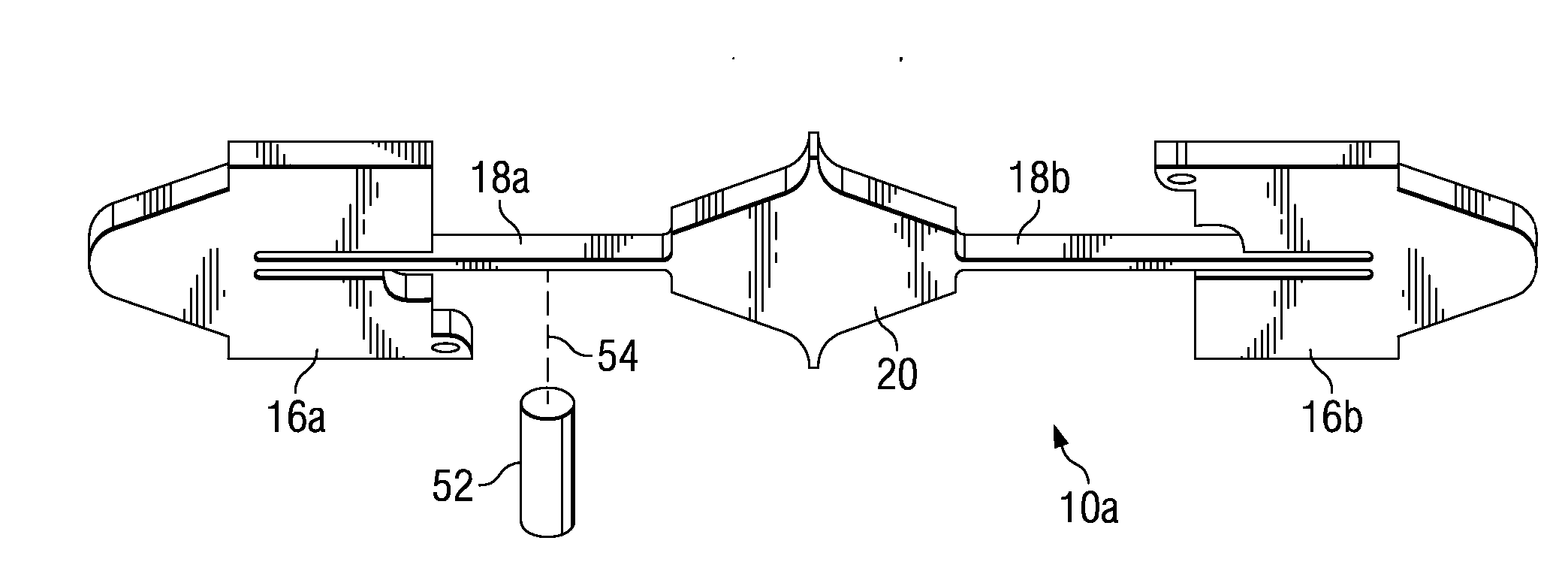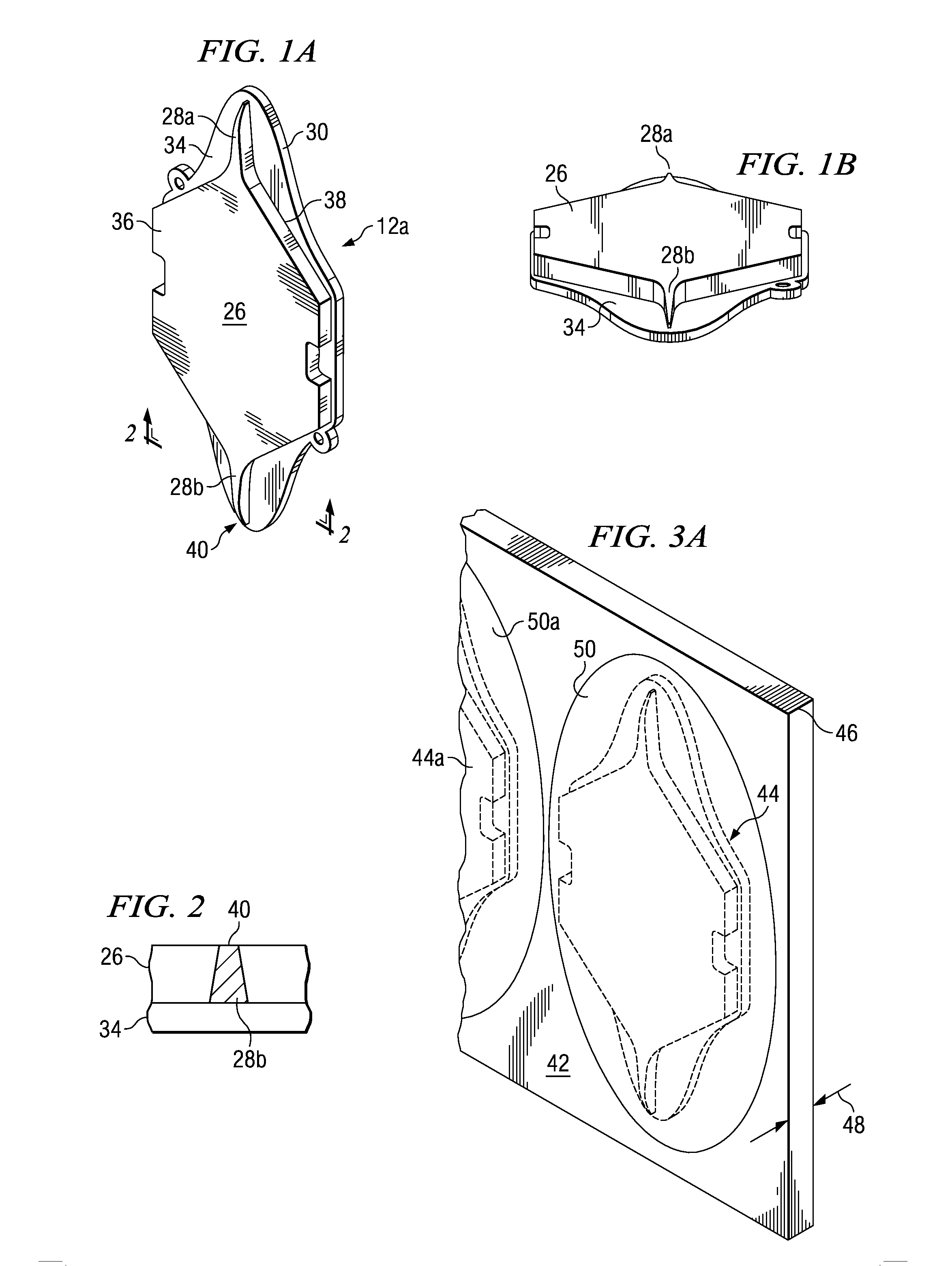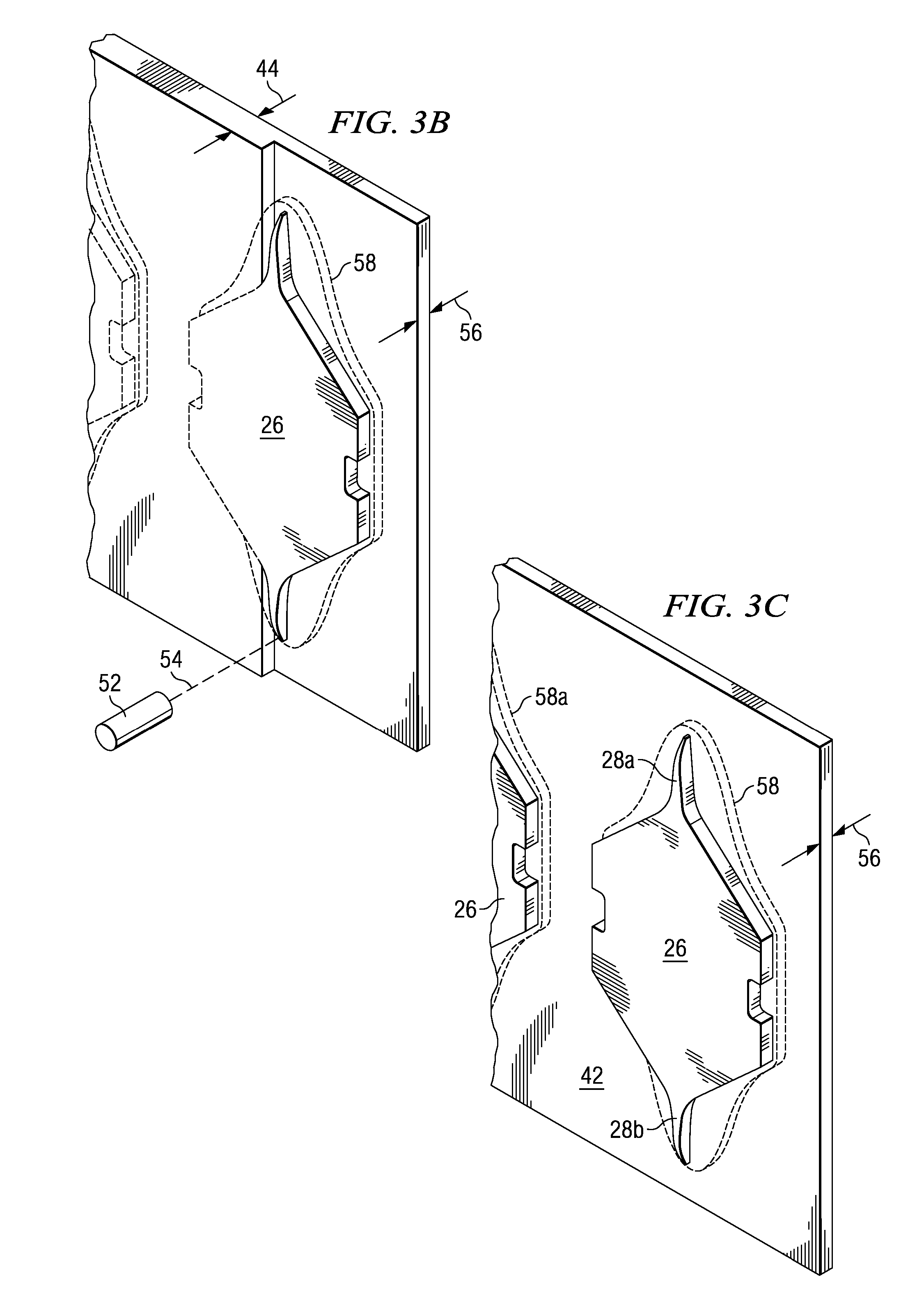Manufacturing a mirror plate or other operational structure having superior flatness by laser milling for use with torsional hinged devices
a technology of laser milling and mirror plate, which is applied in the direction of mountings, microelectromechanical systems, instruments, etc., can solve the problems of ineffective spines, affecting the flatness of mirror reflective surfaces, and affecting the flatness of smaller and even thinner mirrors with even greater rotational speeds
- Summary
- Abstract
- Description
- Claims
- Application Information
AI Technical Summary
Benefits of technology
Problems solved by technology
Method used
Image
Examples
Embodiment Construction
[0028] The presently preferred embodiments are discussed in detail below. It should be appreciated, however, that the present invention provides many applicable inventive concepts that can be embodied in a wide variety of specific contexts. The specific embodiments discussed are merely illustrative of specific ways to make and use the invention, and do not limit the scope of the invention.
[0029] Referring now to FIGS. 1A and 1B, there is shown two perspective back views of a multilevel structure mirror formed according to the teachings of the present invention. The multilevel mirror structure is suitable for use as a component of a torsional hinged oscillating mirror, such as for example, a resonant mirror. As can be seen from FIGS. 1A and 1B, the multilevel mirror structure 12a is similar to the mirror shape discussed in the prior art FIGS. 8C and 8D. As shown, there is a first level shape or truss structure 26 formed integral with a mirror level or second level shape 34 that defi...
PUM
 Login to View More
Login to View More Abstract
Description
Claims
Application Information
 Login to View More
Login to View More - R&D
- Intellectual Property
- Life Sciences
- Materials
- Tech Scout
- Unparalleled Data Quality
- Higher Quality Content
- 60% Fewer Hallucinations
Browse by: Latest US Patents, China's latest patents, Technical Efficacy Thesaurus, Application Domain, Technology Topic, Popular Technical Reports.
© 2025 PatSnap. All rights reserved.Legal|Privacy policy|Modern Slavery Act Transparency Statement|Sitemap|About US| Contact US: help@patsnap.com



